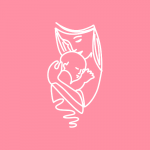Ever wondered why some people seem to unlock their potential while others stay stagnant? The secret often lies in understanding and navigating the stages of personal development. Just like a tree grows through various phases, so do humans evolve through stages that lead to self-mastery and self-actualization. This journey begins with self-discovery, progresses through development and mastery, and culminates in realizing one's fullest potential. Dive into the world of personal development stages and learn how to unlock the best version of yourself.
Understanding the Stages of Personal Development
Personal development stages are crucial for unlocking one's potential. The journey begins with self-discovery, where individuals gain insight into their character, needs, values, and purpose. This phase is foundational, as it sets the stage for understanding interests, hopes, dreams, and potential. As people progress through different stages, they engage in continuous reflection and action, aiming to achieve self-mastery and ultimately, self-actualization.
- Self-Discovery: Understanding your character, needs, values, and purpose.
- Self-Development: Enhancing physical and mental skills, competencies, and knowledge.
- Self-Mastery: Achieving a high level of skill and competence in personal and professional life.
- Self-Actualization: Realizing and fulfilling one's potential.
Continuous reflection and action are essential for personal growth. By regularly evaluating one's progress and making necessary adjustments, individuals can navigate through each stage effectively. This ongoing process ensures that growth is not stagnant but dynamic and evolving.
Tools like journaling, meditation, and mentorship can support this journey. These exercises help maintain focus, provide clarity, and offer guidance, making the path to self-actualization more attainable.
Erikson's Stages of Psychosocial Development

Erikson's theory of psychosocial development outlines eight distinct stages, each characterized by a specific conflict that individuals need to resolve. These conflicts span from infancy to late adulthood, shaping personality and behavior.
Trust vs. Mistrust
During infancy, the primary conflict is Trust vs. Mistrust. This stage is crucial as it sets the foundation for future relationships. Infants learn to trust their caregivers for basic needs. Successful resolution leads to a sense of security, while failure results in fear and suspicion.
Autonomy vs. Shame and Doubt
In early childhood, the conflict shifts to Autonomy vs. Shame and Doubt. Children start to assert their independence by making simple choices and exercising personal control. Positive reinforcement fosters confidence, while excessive criticism can lead to feelings of shame and doubt.
Initiative vs. Guilt
The preschool years introduce the conflict of Initiative vs. Guilt. Children begin to initiate activities and interact socially. Encouragement in this stage promotes initiative, whereas discouragement or excessive control can result in guilt and inhibition.
Industry vs. Inferiority
School age brings the conflict of Industry vs. Inferiority. Children focus on developing skills and achieving competence in various areas, such as academics and sports. Success leads to a sense of industry and confidence, while repeated failure can result in feelings of inferiority.
Identity vs. Role Confusion
Adolescence is marked by the conflict of Identity vs. Role Confusion. Teens explore different roles and identities, striving to establish a stable sense of self. Successful resolution results in a clear identity, while failure leads to confusion and uncertainty about one's place in society.
Intimacy vs. Isolation
Young adulthood features the conflict of Intimacy vs. Isolation. Individuals seek to form intimate relationships and maintain close friendships. Successful resolution fosters strong, meaningful connections, while failure can result in loneliness and isolation.
Generativity vs. Stagnation
In middle adulthood, the focus shifts to Generativity vs. Stagnation. Adults strive to contribute to society through work, family, and community involvement. Successful resolution leads to a sense of purpose and generativity, while failure results in stagnation and self-absorption.
Integrity vs. Despair
Late adulthood is characterized by the conflict of Integrity vs. Despair. Individuals reflect on their lives and achievements. A sense of integrity and fulfillment arises from a well-lived life, while despair can result from regrets and a sense of missed opportunities.
| Stage | Conflict | Age Range |
|---|---|---|
| Trust vs. Mistrust | Infancy | 0-1 years |
| Autonomy vs. Shame and Doubt | Early Childhood | 1-3 years |
| Initiative vs. Guilt | Preschool | 3-6 years |
| Industry vs. Inferiority | School Age | 6-12 years |
| Identity vs. Role Confusion | Adolescence | 12-18 years |
| Intimacy vs. Isolation | Young Adulthood | 18-40 years |
| Generativity vs. Stagnation | Middle Adulthood | 40-65 years |
| Integrity vs. Despair | Late Adulthood | 65+ years |
Piaget's Stages of Cognitive Development
Piaget's theory of cognitive development outlines four distinct stages, each representing a different level of cognitive maturity and ability to understand the world. These stages progress as children grow, highlighting how their thinking evolves over time.
- Sensorimotor Stage: Birth to 2 years
- Preoperational Stage: 2 to 7 years
- Concrete Operational Stage: 7 to 11 years
- Formal Operational Stage: 12 years and up
Sensorimotor Stage
The Sensorimotor Stage spans from birth to approximately 2 years. During this period, infants learn about the world through their senses and actions. They develop object permanence, realizing that objects continue to exist even when out of sight. This stage marks the beginning of intentional actions and basic problem-solving skills.
Preoperational Stage
From ages 2 to 7, children enter the Preoperational Stage. At this point, they start using language and engage in symbolic play. However, their thinking remains egocentric, meaning they have difficulty understanding perspectives other than their own. They also struggle with the concept of conservation—the understanding that quantity remains the same despite changes in shape or appearance.
Concrete Operational Stage
The Concrete Operational Stage occurs between ages 7 and 11. During this time, children's thinking becomes more logical and organized. They gain a better grasp of conservation and can perform mental operations on concrete objects. This stage allows for improved problem-solving abilities and understanding of complex relationships.
Formal Operational Stage
Beginning around age 12, the Formal Operational Stage marks the development of abstract and hypothetical thinking. Adolescents and adults in this stage can reason logically about abstract concepts and test hypotheses systematically. This stage enables advanced problem-solving and critical thinking skills, preparing individuals for complex decision-making in adulthood.
Practical Steps for Progressing Through Personal Development Stages

Setting clear goals and seeking feedback are essential for personal development. Goals provide direction and motivation, acting as a roadmap for growth. Feedback, whether from mentors, peers, or self-assessment, helps identify strengths and areas for improvement. It ensures that you stay on track and make necessary adjustments to your approach. Combining these elements fosters a proactive and informed journey through the stages of personal growth and development.
- Setting Goals: Define clear and achievable objectives to provide direction and motivation.
- Seeking Feedback: Regularly request input from mentors, peers, and self-assessments to identify strengths and weaknesses.
- Self-Reflection: Engage in regular self-reflection to evaluate progress and make necessary adjustments.
- Continuous Learning: Stay committed to learning new skills and knowledge to enhance personal and professional growth.
- Maintaining a Growth Mindset: Embrace challenges and view setbacks as opportunities for learning and improvement.
Tools and exercises like journaling and meditation can significantly support your personal development journey. Journaling helps track progress, clarify thoughts, and set intentions. Meditation promotes mindfulness, reducing stress and enhancing self-awareness. Together, these practices create a strong foundation for continuous growth and self-improvement.
Real-Life Examples of Personal Development Stages
Real-life examples are crucial in understanding how personal development stages unfold. They provide relatable scenarios that showcase the challenges and triumphs experienced by individuals. By examining these stories, one can gain practical insights into navigating their own personal growth journey.
- Overcoming childhood adversity (Trust vs. Mistrust)
- Achieving career fulfillment (Generativity vs. Stagnation)
- Finding purpose in late adulthood (Integrity vs. Despair)
These examples highlight the diverse paths to personal growth and development. Overcoming childhood adversity teaches resilience and trust. Achieving career fulfillment exemplifies the importance of contributing to society. Finding purpose in late adulthood offers a sense of fulfillment and peace. Each story serves as a guide, demonstrating that personal development is a continuous and evolving process.
Tools and Exercises for Personal Development

Utilizing tools and exercises is essential for personal development. They offer structured ways to reflect on progress, set clear objectives, and stay motivated. By incorporating these tools into daily routines, individuals can more effectively navigate the steps of personal development and the personal development cycle.
- Journaling: Helps track progress, clarify thoughts, and set intentions.
- Meditation: Promotes mindfulness, reduces stress, and enhances self-awareness.
- Goal-Setting Worksheets: Provides a structured approach to defining and achieving objectives.
- Personality Assessments: Offers insights into strengths, weaknesses, and areas for growth.
Integrating these tools into daily life ensures continuous growth. Journaling can be done each morning or evening to reflect on the day's achievements and challenges. Meditation can be practiced for a few minutes daily to maintain mindfulness. Goal-setting worksheets can be reviewed weekly to track progress, and personality assessments can be revisited periodically to reassess and realign personal development plans.
Final Words
Understanding personal development stages begins with self-discovery. It involves recognizing your values and potential.
Erikson’s stages of psychosocial development highlight the conflicts at various life stages. His theory emphasizes resolving these conflicts for healthy growth.
Piaget’s cognitive development theory explains how thinking evolves from birth to adulthood. Each stage reveals increasing cognitive complexity.
Progressing through these stages involves setting goals, self-reflection, and continuous learning. Real-life examples and tools like journaling and meditation can assist in this journey.
Embracing these concepts leads to continuous personal growth and a fulfilling life.
FAQ
What are the 8 stages of development by Erik Erikson?
Erik Erikson's stages of development include Trust vs. Mistrust, Autonomy vs. Shame and Doubt, Initiative vs. Guilt, Industry vs. Inferiority, Identity vs. Role Confusion, Intimacy vs. Isolation, Generativity vs. Stagnation, and Integrity vs. Despair.
What are Erikson’s stages of development?
Erikson’s stages of development cover various life stages, each characterized by a specific conflict that helps shape an individual's personality and behavior.
What are the 5 stages of personality development?
The five stages of personality development often refer to oral, anal, phallic, latency, and genital stages, based on Sigmund Freud's theory of psychosexual development.
What are the 5 main areas of personal development?
The 5 main areas of personal development include self-awareness, self-improvement, developing relationships, managing emotions, and achieving goals.
What are the 7 stages of human development?
The 7 stages of human development can refer to infancy, early childhood, middle childhood, adolescence, early adulthood, middle adulthood, and late adulthood.
What are the 4 stages of self development?
The 4 stages of self-development typically include self-discovery, self-development, self-mastery, and self-actualization.
Where can I find a PDF of Erikson's stages of development?
You can find PDFs of Erikson's stages of development through educational websites, psychology book summaries, and academic databases.
What are real-life examples of Erikson's stages of development?
Real-life examples include overcoming childhood adversity (Trust vs. Mistrust) and achieving career fulfillment (Generativity vs. Stagnation).
What are Piaget's stages of development?
Piaget's stages of cognitive development are Sensorimotor, Preoperational, Concrete Operational, and Formal Operational.
What is the importance of ongoing reflection and action in personal development?
Ongoing reflection and action help individuals continually evaluate their growth, set new goals, and adapt to changes, leading to self-mastery and personal fulfillment.
What are effective tools and exercises for personal development?
Effective tools and exercises include journaling, meditation, goal-setting worksheets, and personality assessments.
What are the stages of psychosocial development?
The stages of psychosocial development cover infancy to late adulthood, resolving conflicts like Trust vs. Mistrust and Integrity vs. Despair.


